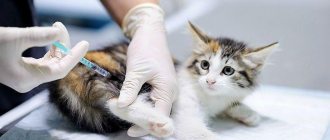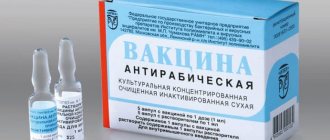The decision to have a pet comes with a lot of responsibility. It is necessary not only to provide the animal with fresh and high-quality food in a timely manner, to take walks, and to give physical exercise, but also not to forget about its health and to prevent the risks of diseases.
To protect your pet from such serious and life-threatening diseases as rabies, it is necessary to carry out annual vaccination, which will build immunity to external infectious agents.
What is rabies in dogs
Rabies is otherwise interpreted as a fear of water. It belongs to the category of deadly diseases. The source of the disease is a neurotropic virus belonging to the rhabdovirus family. First of all, the organs of the central nervous system are affected without the possibility of starting recovery processes. Rabies is caused by sick animals spreading the virus through interaction with healthy dogs. Such animals include birds, cats, dogs, and predators.
Incubation can last from several days to 2–4 months; the virus in saliva is detected 5–6 days before the first symptoms of rabies appear.
Infection occurs during a bite through the mucous membranes. As a rule, the virus is formed in the salivary glands. A small part of it is also excreted in urine and feces. The virus, penetrating the body, not only travels through the blood, but also involves nerve endings and affects the spinal cord and brain.
The virus tolerates frost well, but dies at temperatures above 56 degrees Celsius within 15–20 minutes. Direct sunlight, standard disinfectants, and alcohol also help fight the virus. But! Resistant to phenols, does not die during processing.
Due to the increased degree of preservation of the virus, it is constantly in the environment and causes harm to unvaccinated dogs and other animals. There are rumors that after eating contaminated meat, a dog can catch the virus, but this has not yet been confirmed in scientific studies.
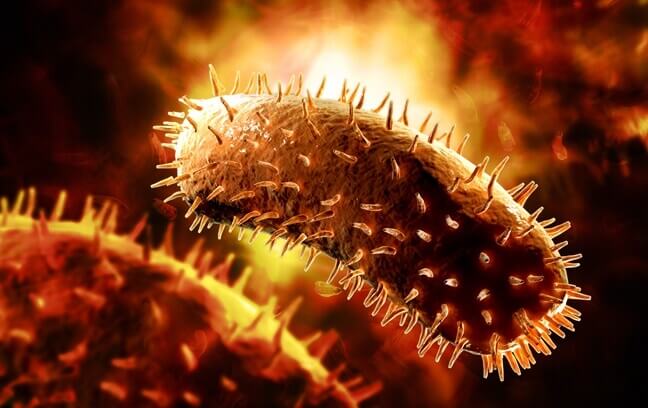
Once a year, get a comprehensive vaccination that will protect your dog from contracting rabies and other life-threatening diseases.
Main signs of infection:
- Anxiety, excitability, partial fear of the sounds of water;
- Gradual refusal of water, the appearance of aggression towards people and other animals;
- The appearance of foamy saliva from the mouth, as muscle paralysis prevents swallowing;
- Desire to eat inedible things.
If you notice similar symptoms in your pet, you should immediately isolate it in a separate room and call a veterinarian to determine the diagnosis and provide first aid. Such a dog can harm people who are in the room.
For humans, this disease is also fatal, so you should be wary of stray dog bites, since they are unlikely to have a rabies injection. There have been cases when a successful cure occurred when a person was immersed in a very deep coma.
But this method is unsafe, as it can cause the development of severe mental disorders.
Forms of rabies stage
Rabies is characterized by acute and hyperacute forms. The infection itself develops in the following stages:
- Prodromal – duration is 48–72 hours, characterized by changes in the pet’s behavior, the appearance of anxiety and inadequate reaction to stimuli, the desire to hide in a secluded place and hide from all people, or, conversely, an increased demand for attention appears. Possible aggression;
- Manic – the pet’s mood is constantly changing, aggression can turn into apathy in a few minutes, interest in following commands is lost, and disobedience begins. Foamy salivation appears, aggression towards people and other animals is noticed. The dog is capable of running away from home;
- Paralytic or silent - severe apathy appears, paralysis of the muscles of the pharynx and hind limbs develops, the tongue begins to fall out, appetite disappears due to pain in the larynx, breathing and heart rhythm are disturbed. After a few days, the dog falls into a coma and dies from exhaustion and irreversible processes in the body.
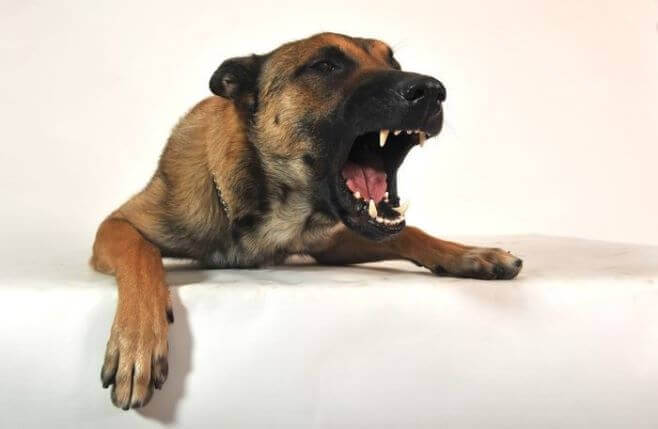
Other stages of rabies are possible:
- Atypical - a characteristic sign is the appearance of gastroenteritis, accompanied by refusal of food, foamy vomiting with blood, diarrhea;
- Abortive (in bitches);
- Recurrent - at first the symptoms disappear, then reappear after a few days.
Vaccination frequency
The question of how often it is necessary to vaccinate a dog so that it does not become infected with rabies is decided taking into account the period of validity of the vaccine. However, regardless of how long the drug lasts, in areas with an unfavorable epizootic situation, annual revaccination of animals against rabies is required. Vaccination of dogs for the first time, including those picked up on the street, and pets that were last vaccinated more than 2 years ago, is carried out in 2 stages with a difference of 3 weeks.
To protect your dog from infection, in some cases an unscheduled administration of a rabies vaccine is required. Regardless of the date of the last vaccination, the use of the vaccine is necessary if a rabies quarantine has been declared in the area, before traveling abroad, to participate in exhibitions and other public events, etc. Before mating, this procedure is also necessary if the previous one expires soon, i.e. Because it is unacceptable during pregnancy - the components of the drug penetrate the placenta and can lead to mutation and even death of puppies.
Vaccines for dogs against rabies
Mandatory vaccination is established at the state level. Without a note in the dog's passport about vaccination, it is impossible to participate in exhibitions. And also, customs does not allow such animals through; they can forcibly confiscate them and vaccinate them.
In some countries, there is criminal liability for failure to vaccinate animals. This is taken very seriously all over the world; you should not vaccinate your animal on time to protect yourself and save the life of your pet.
The following types of vaccines are used in the Russian Federation:
- Nobivak Rabies is a Dutch-made product that belongs to the category of those that do not contain a live pathogen. Its uniqueness lies in the possibility of using the vaccine as a solvent for other Nobivak vaccinations, which makes it possible to immediately protect the animal from several diseases;
- Rabix - also belongs to the category of vaccines that do not have a live pathogen; use is allowed from eight weeks of a pet’s life. A distinctive feature of the vaccine is that it is a secondary revaccination of the first vaccination of animals. It is carried out after 21 days, then every year the animals are vaccinated once;
- Dohivac is a Dutch-made drug that also does not contain a live pathogen and is similar in characteristics to Nobivak;
- Febrivac 3 plus is a drug of German origin, without a live pathogen in its composition, similar to Nobivak.
Before choosing a vaccine, you should consult with a veterinary clinic, study reviews both on the Internet and from pet owners and professional breeders. Choosing the right vaccine will keep you and your pet safe.
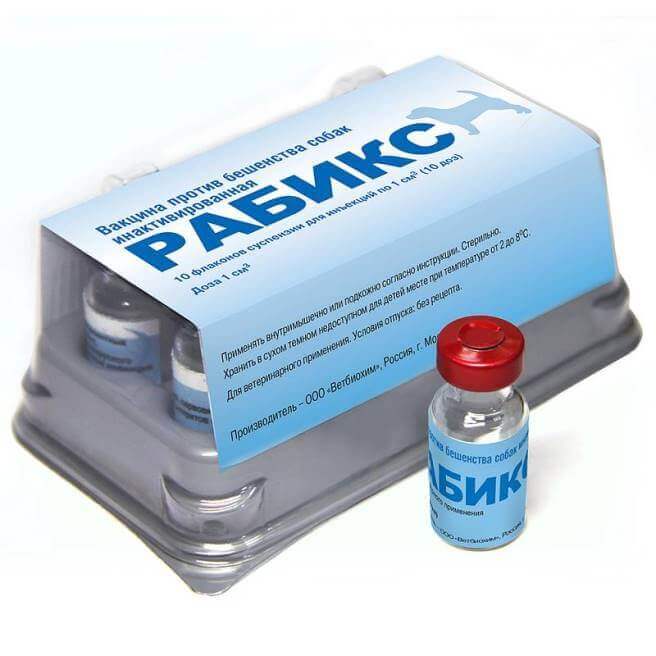
If you plan to breed, you must first prepare the dog so that the pregnancy is easy and without complications. A month before pregnancy, bitches are vaccinated against viral infections, dewormed, and protected from insects. Is a rabies vaccination necessary for a pregnant dog? Of course, all doctors believe that it is necessary to vaccinate the dog before a planned mating.
If pregnancy occurs, it is recommended to vaccinate the dog in the first third of pregnancy, that is, 19–21 days after mating. It is necessary to read the instructions carefully; the manufacturer indicates whether there are any contraindications such as pregnancy. You should refuse vaccination if your dog is having a hard time with pregnancy. The vaccine is more likely to provide protection to the mother than to the puppies, since it then takes time to develop immunity.
"Municipal" or private
Many experienced owners advise contacting a private clinic and refusing the free injection. What's the catch?
The regional veterinary institution provides free vaccinations to any dog, cat, or cow. This is part of the state program. All cases of rabies are registered and, based on the data map, conclusions are drawn about the epizootic state of the area. According to statistics, veterinarians are required to vaccinate animals (whether the owners want it or not) in high-risk regions.
Most often, veterinary stations use cheap, domestically produced drugs. This is exactly what many owners don't like. In addition, it is believed that private clinics that value their reputation purchase the vaccine only from a trusted supplier and store it in accordance with the standards. As a result, commercial companies are more trusted by the average owner than government agencies.
When to vaccinate a puppy
Vaccination of puppies begins when they reach three months of age. If there are no strong viral pathogens in the environment and the situation is favorable, then the dog can be vaccinated at the age of 6 months to 1 year.
This is only possible if the puppy's mother is vaccinated, otherwise there is a risk that she will accidentally catch the virus and pass it on to her baby. If dog diseases often occur in the environment, then it is better to vaccinate the puppy at 3 months; before that, you should spend less time walking, if possible, work with the animal at home, give it physical activity, and play.
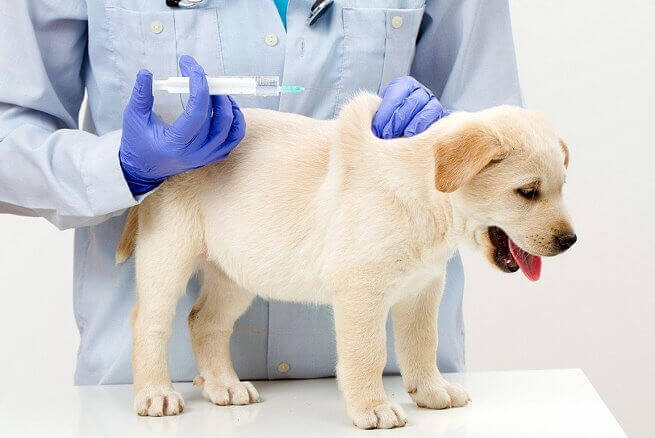
Preparing for vaccination
There are no particular difficulties in preparing for vaccination. However, it is important to always remember the mandatory pre-treatment against worms. It is necessary to ensure that excessive amounts of toxins do not interfere with the formation of immunity to pathogens. If there are worms, the vaccination will be useless, ineffective, and there will be no immunity to rabies.
You should also treat against insects and other parasites. It is important to carefully monitor your pet’s health, since any deterioration in health, weakness, or refusal to eat can affect the result of vaccination.
It is not easy to vaccinate, but also to be sure that the animal is completely safe, that it is not at risk of rabies if it interacts with a contaminated environment, and that the health of your loved ones will not be at risk.
When to walk your adult dog after vaccination?
Immunization for stronger adult animals is repeated annually, and the injection is given with complex preparations, including pathogens of several infections. It is permissible to add a separate injection to the indicated injection, which forms resistance to rabies. In females, the immunization schedule depends on estrus, mating, and begins a month before the indicated processes.
Walking adult dogs is not prohibited, but by the end of the 11th – 12th month, immunity decreases, so you should walk before and after vaccination for 14 days separately from other dogs, without intense physical activity. It is better to extend the quarantine period to 21 days to avoid contracting rabies. In cold weather, the dog does not need to be washed; just rinse its paws with warm water and treat the coat with dry shampoo.
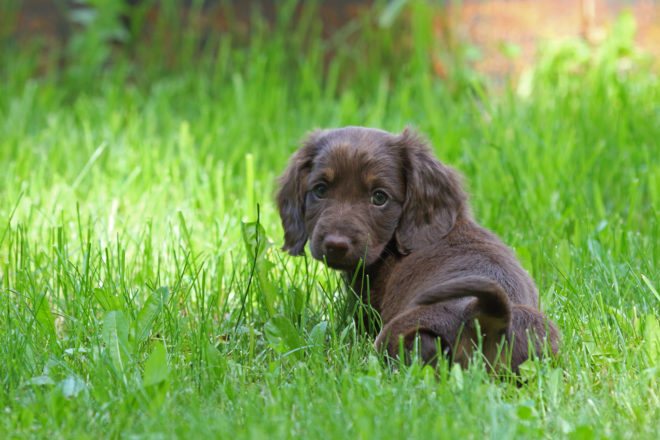
After quarantine, the dog is gradually returned to active activities, allowed to swim in reservoirs, and restrictions on interactions with any animals are removed.
Deworming
Deworming is a prerequisite, without which the animal is not allowed to be vaccinated. Usually, owners give an anthelmintic drug 10 days before vaccination, but there are also general recommendations:
- Carrying out a stool analysis - if worms or prerequisites for their appearance are detected, deworming is carried out;
- If a repeat stool test 10 days after taking the drug reveals larvae or worms again, repeat deworming is carried out, followed by a vaccine 10 days later.
Contraindications to rabies vaccination
Every animal needs to be vaccinated; it is important to know when to do it. Regardless of the type of vaccine, there are general contraindications that every owner needs to be aware of:
- It is worth vaccinating a puppy only after it reaches three months; early vaccination is contraindicated in all cases, except when the pet lives in a disadvantaged area with a strong spread of the disease;
- If the animal is sick and weak, it will not allow it to form normal immunity to pathogens, so the vaccine may be ineffective.
The vaccination itself does not cause any harm.
Why is vaccination necessary?
A vaccine helps a dog develop immunity to a specific infection. It contains fragments of an infectious agent, which, when entering a living organism, causes a corresponding reaction in the form of the production of antibodies. Subsequently, if the pet encounters a similar invasion of infection, it will not get sick or the disease will be mild.
Dangerous diseases of dogs for which mandatory vaccination is carried out:
There are also vaccines against lichen, trichophytosis, and microsporia.
How often do you vaccinate your dog against rabies?
Before vaccination, the veterinarian must examine the pet, measure the temperature and ask the owner about the dog’s condition. If there are prerequisites for illness, additional blood sampling and testing is performed.
If there are no contraindications, then the vaccine is administered to the dog in accordance with the instructions. Most rabies vaccines are administered intramuscularly; some drugs may be administered subcutaneously in the withers area.
The administration of the vaccine must be recorded in the pet’s veterinary passport and certified by the doctor’s signature. The date, name, series and expiration date of the vaccine are indicated. You can also paste in a label from the drug. Some drugs additionally come with special stickers.
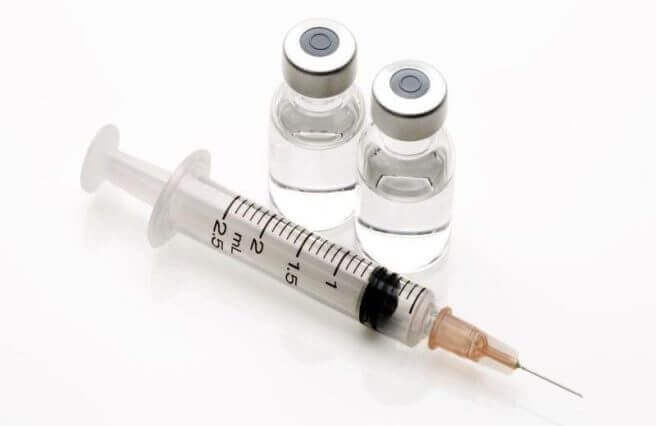
You should not leave the veterinary clinic immediately; it is better to wait 15–20 minutes to identify possible allergic reactions and provide medical assistance.
Can I walk my dog on the day of vaccination? If the area is favorable, then there is no need to limit your walks. The protection itself will be fully developed after 21 days, so it is important not to be in places with an increased risk of rabies infection.
It is recommended to bathe the dog only after 2-3 weeks to avoid hypothermia and complications from the vaccine. You should not give your pet excessive exercise during this period, as the body must adapt to the vaccine.
What happens if you don’t comply with the quarantine deadlines?
It is especially important to observe quarantine after the first vaccinations of puppies, since, unlike adult pets, their immune system is not fully formed, the clostral immunity received from the mother dog weakens, and the pet’s body is weakened. What happens if you do not comply with the quarantine period?
Important! Failure to comply with the quarantine regime increases the risk of the dog becoming infected with dangerous infections, diseases of viral, bacterial, and parasitic etiology.
Do not forget that vaccination involves the introduction of live, dead strains of bacteria. Therefore, the risk of infection with dangerous viruses and bacteria is very high until the end of the quarantine regime.
Reaction to rabies vaccination in dogs
Despite vaccine manufacturers' promises that they will not cause side effects, complications can occur in any dog's body.
The injection site is often accompanied by the appearance of a hard, round swelling. Skin thickening and slight heating of the injection site are observed. If there is no increase in density and no pain when touched, there is nothing to worry about. After 15–22 days, the lump will resolve on its own.
The first 10–12 hours may be accompanied by a slight increase in temperature, decreased activity, digestive disorders, and a weak reaction to external stimuli.
Operating principle
The immune system plays a protective role in the body. Having encountered a virus and defeated it, it produces specific antibodies aimed at fighting precisely this, already familiar “troublemaker.” The problem is that it is difficult to fight some infections; the disease can lead to serious consequences and even death of the animal. A complex vaccination contains weakened viral cells that the immune system can handle without problems. We can say that in this way the security receives a “black list” of unwanted visitors with detailed instructions on how to eliminate them. Thanks to this, the animal remains healthy. And even if the disease occurs, a mild form and quick recovery are guaranteed.
Why is a comprehensive vaccination for a dog necessary? The answer is obvious. It is much easier to visit the veterinarian once than to vaccinate against each infection separately. Whatever one may say, the injection is still stressful for the animal, as well as for humans. In addition, savings are an important factor.
Actions after vaccination
Not all owners know what to do after vaccination. Some breeders who are just starting out may also not be familiar with vaccination rules. In fact, there is nothing special after vaccination. You just need to observe your pet; if unusual behavior, health problems, or aggression are detected, you need to show the animal to a veterinarian.
It is important for 21 days (the quarantine period after vaccination against rabies in dogs) to follow the regime: high-quality and proper food, spend time in the fresh air, and ensure a state of complete calm. In this case, the dog will develop good immunity to external threats.
Validity period and frequency of revaccination
Depending on the type of vaccine, the validity period and frequency of revaccination are determined. This can be found out from your veterinarian or read in the instructions for the drug. Basically, all vaccines are valid for two to three years with a guarantee from the manufacturer of the presence of rabies antibodies in the animal’s blood.
In some countries, annual vaccination of animals is legally mandated, regardless of the duration of the drug.
In disadvantaged areas, vaccination may occur earlier, depending on the determination of antibody titer. Low values allow revaccination even after several months.

At what age does a puppy get its first vaccination?
Some veterinarians insist that the vaccination must be done before the puppy reaches 3 months of age, before his baby teeth begin to change into permanent ones. Early vaccination is also necessary for representatives of hunting breeds, animals kept in a private home or living in an area where a rabies outbreak has been registered. If the owner does not plan to travel with the puppy, attend exhibitions and other public events with him, and the epidemiological situation in the area of residence is within normal limits, he can be vaccinated at the age of 6–9 months.
Pros and cons of vaccination
Not all owners carry out annual prophylaxis for their animals; some do not know about its existence. Some animals spend their time at home, but this does not exclude the need to protect them from environmental influences. Vaccination of dogs is aimed at overcoming the risks of diseases, including rabies.
Therefore, owners should not be faced with the question of whether to vaccinate. The likelihood of contracting rabies is quite high; in many countries of the world, the obligation to vaccinate an animal is fixed at the state level, which implies liability in case of evasion of regulations.
There is no reason why you should be against vaccination. It will not only save the lives of you and your pet, but also avoid problems if other people are bitten by your pet. If vaccination is not carried out and the dog becomes infected with rabies, at the legislative level such animals are euthanized.
Vaccination by all breeders and owners will significantly reduce the impact of the virus on the environment. The only disadvantage may be individual intolerance to some components of the vaccine, but this issue must be resolved with a veterinarian and alternative active drugs must be used.
Dog vaccination
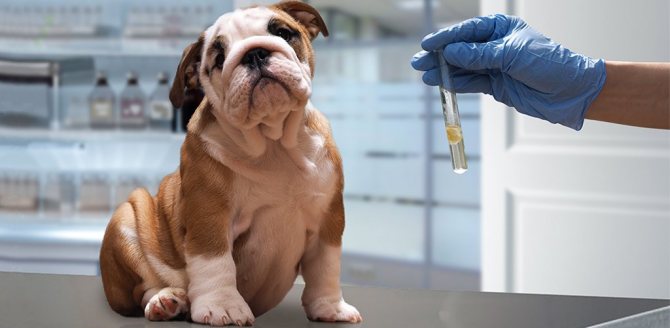
A timely vaccination given to your dog will not only preserve its health, but will also prevent a number of diseases in the household. In addition, by spending some time and money on a preventive injection, the owner will save himself from possible large expenses in the future if the pet suddenly “catch” the infection. In order for your dog’s vaccination to be successful and have only a positive effect on the animal’s body, you need to know when and what vaccine to give, and to properly prepare your pet for the procedure.
Possible complications and side effects
Like any other medications, rabies vaccinations can have side effects on your pet's health. Possible complications include:
- Slight temporary increase in temperature;
- Partial power failure;
- Drinking a lot of water, which causes frequent trips to the toilet;
- A state of fatigue and a constant desire to sleep;
- Vomiting or diarrhea rarely occurs;
- Allergies may occur if there is a predisposition to this from birth.
Allergies can appear at any time. The main symptoms of this reaction are:
- Red skin rash;
- The appearance of crusts and other lesions on the skin;
- If the dog is highly susceptible to allergic reactions, urticaria or Quincke's edema may occur;
- Profuse diarrhea may occur due to intolerance to individual components.
However, in practice such cases are rare. On average, side effects occur in 1.3% of vaccinated dogs. Even if such effects appear, they usually disappear within 10 hours. This does not require a trip to the veterinary clinic if the symptoms do not worsen after 10 hours.
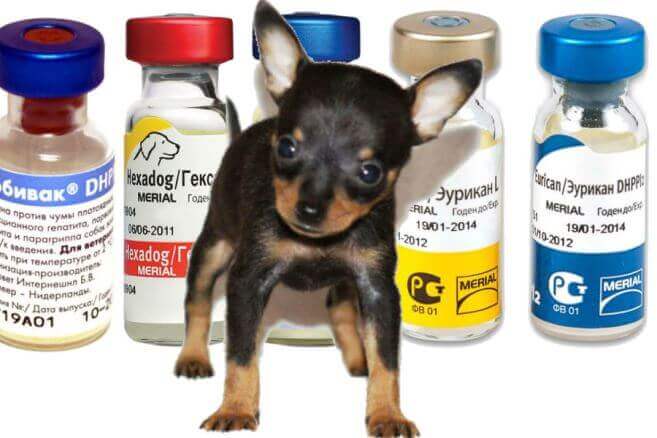
A veterinarian's help is required if signs of fever, a state of apathy for two or more days, or heavy and hoarse breathing are detected. In such cases, it is necessary to immediately take your pet to a veterinary clinic, since there is a risk of death if assistance is not provided in a timely manner.
Thus, it is important to remember that an animal is a big responsibility! Before getting a pet, be sure to research possible diseases both in all dogs and in specific breeds. Some breeds are predisposed to ear infections, bone disease, breathing and heat problems. When you are sure that your pet will be under reliable protection, feel free to make yourself a friend.
Do not forget that vaccinations must be given at clearly indicated intervals. This will keep you, your pet and those around you safe. Rabies vaccination for both a puppy and an adult dog is the same drug as other medications.
It does not carry any risks for the dog, but only helps it fight external pathogens of the disease. All possible risks can be prevented in a timely manner if you exercise due diligence and take care of your pet.
You should not interact with wild dogs, even if your pet is vaccinated. If a stray dog bites you, there is a risk of death, so it is better to walk in safe places, communicate only with dogs that have their own owners, and regularly monitor the pet’s health.
Are there pills or other anti-rabies medications for dogs?
To form lasting immunity against rabies, a vaccine with a killed virus is used. If an unvaccinated dog is bitten by a stray animal, rabies immunoglobulin is administered, which helps the body develop emergency protection against rabies. This product contains blood antigens from people or horses immunized against rabies. The product must be administered as quickly as possible, no later than 3 days after contact with an infected or suspicious animal. Rabies globulin provides short-term protection, so it is given with the vaccine.
Share with friends!







